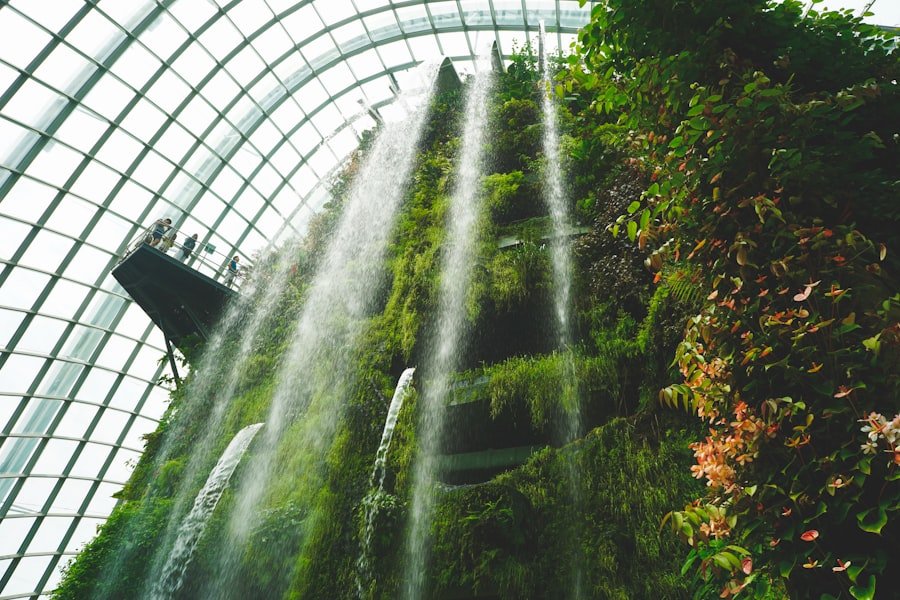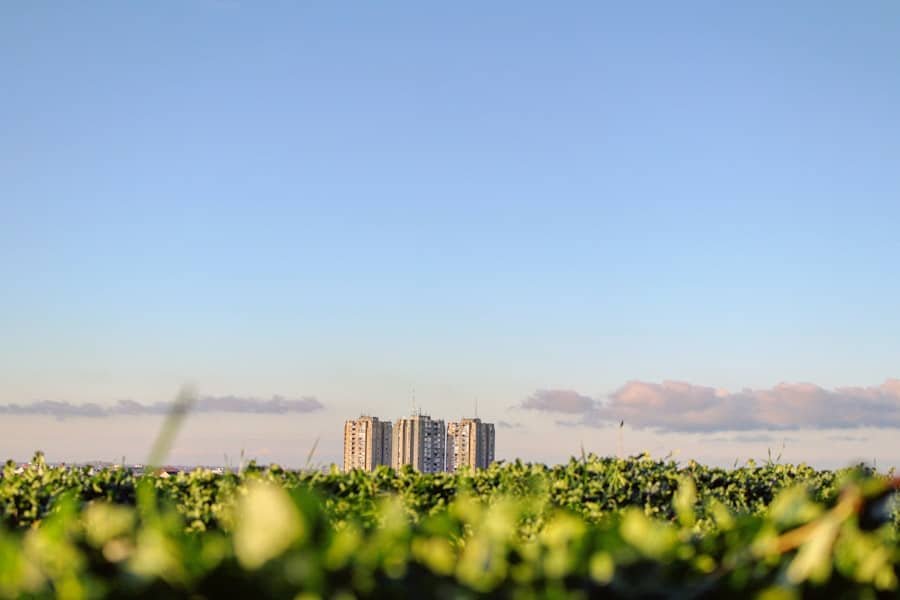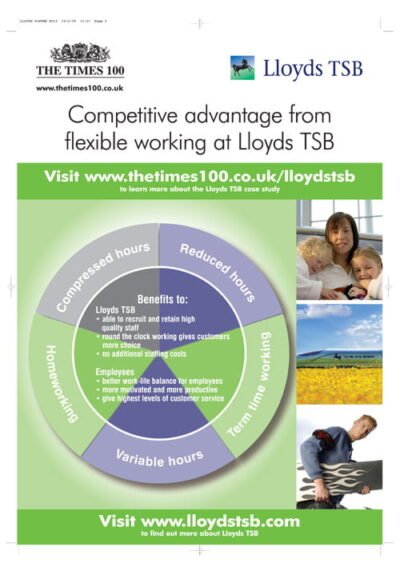Sustainable property development refers to the practice of creating buildings and communities that meet the needs of the present without compromising the ability of future generations to meet their own needs. This concept encompasses a holistic approach that integrates environmental, social, and economic considerations into the planning, design, construction, and operation of properties. The aim is to create spaces that are not only functional and aesthetically pleasing but also environmentally responsible and socially equitable.
This multifaceted approach requires collaboration among various stakeholders, including architects, urban planners, developers, and local communities. At its core, sustainable property development seeks to minimise the negative impacts of construction and urbanisation on the environment. This includes reducing carbon emissions, conserving natural resources, and promoting biodiversity.
It also involves creating spaces that enhance the quality of life for residents and users, fostering community engagement, and ensuring that developments are economically viable in the long term. By prioritising sustainability in property development, we can create resilient communities that thrive in harmony with their surroundings.
Summary
- Sustainable property development focuses on creating buildings and communities that are environmentally friendly, socially responsible, and economically viable.
- Sustainable property development is important for reducing carbon emissions, conserving natural resources, and creating healthier and more liveable spaces for people.
- The principles of sustainable property development include energy efficiency, water conservation, waste reduction, and the use of sustainable materials.
- The benefits of sustainable property development include cost savings, increased property value, improved health and well-being, and a positive impact on the environment.
- Challenges and considerations in sustainable property development include high initial costs, regulatory barriers, and the need for collaboration and innovation.
The Importance of Sustainable Property Development
The significance of sustainable property development cannot be overstated, particularly in the context of global challenges such as climate change, urbanisation, and resource depletion. As cities continue to expand and populations grow, the demand for housing and infrastructure increases, often leading to unsustainable practices that harm the environment. Sustainable property development offers a pathway to address these challenges by promoting responsible land use and resource management.
It encourages developers to consider the long-term implications of their projects, ensuring that they contribute positively to both the environment and society. Moreover, sustainable property development plays a crucial role in mitigating climate change. The construction and operation of buildings account for a substantial portion of global greenhouse gas emissions.
By adopting sustainable practices such as energy-efficient design, renewable energy integration, and sustainable materials sourcing, developers can significantly reduce their carbon footprint. This not only helps combat climate change but also aligns with international efforts to achieve net-zero emissions targets. As governments and organisations worldwide commit to sustainability goals, the importance of sustainable property development becomes increasingly evident.
Principles of Sustainable Property Development

The principles of sustainable property development are grounded in a commitment to environmental stewardship, social equity, and economic viability. One fundamental principle is the efficient use of resources. This involves minimising waste during construction, utilising sustainable materials, and implementing energy-efficient systems that reduce consumption over the building’s lifecycle.
For instance, using recycled materials or sustainably sourced timber can significantly lower a project’s environmental impact while promoting circular economy practices. Another key principle is community engagement. Sustainable property development should involve local communities in the planning process to ensure that developments meet their needs and aspirations.
This participatory approach fosters a sense of ownership among residents and can lead to more successful outcomes. Additionally, it helps identify local resources and cultural elements that can be integrated into the design, enhancing the overall character of the development. By prioritising community input, developers can create spaces that are not only functional but also resonate with the people who inhabit them.
Benefits of Sustainable Property Development
The benefits of sustainable property development extend beyond environmental considerations; they encompass economic and social advantages as well. From an economic perspective, sustainable developments often result in lower operational costs due to energy efficiency measures and reduced resource consumption. For example, buildings designed with passive solar heating can significantly decrease heating costs during winter months.
Furthermore, properties that incorporate green technologies may qualify for tax incentives or grants, making them financially attractive for developers. Socially, sustainable property development contributes to improved quality of life for residents. Developments that prioritise green spaces, walkability, and access to public transport promote healthier lifestyles by encouraging outdoor activities and reducing reliance on cars.
Additionally, sustainable developments often foster a sense of community through shared spaces and amenities that encourage interaction among residents. This social cohesion can lead to safer neighbourhoods and a stronger sense of belonging.
Challenges and Considerations in Sustainable Property Development
Despite its numerous advantages, sustainable property development is not without challenges. One significant hurdle is the initial cost associated with implementing sustainable practices. While many green technologies can lead to long-term savings, the upfront investment can be daunting for developers.
This financial barrier may deter some from pursuing sustainable options, particularly in competitive markets where cost minimisation is paramount. Regulatory frameworks also pose challenges for sustainable property development. In many regions, building codes and zoning laws may not adequately support innovative sustainable practices or may even hinder them.
Developers often face bureaucratic obstacles when attempting to incorporate renewable energy systems or green infrastructure into their projects. Navigating these regulations requires a thorough understanding of local policies and may necessitate advocacy for changes that promote sustainability.
Sustainable Property Development Strategies

To overcome these challenges, various strategies can be employed in sustainable property development. One effective approach is to adopt a whole-systems thinking perspective during the design phase. This involves considering how different elements of a project interact with one another and with the surrounding environment.
For instance, integrating green roofs not only enhances insulation but also contributes to stormwater management and biodiversity by providing habitats for wildlife. Collaboration among stakeholders is another critical strategy for successful sustainable property development. Engaging architects, engineers, urban planners, and community members early in the process can lead to innovative solutions that address both environmental concerns and community needs.
For example, co-housing initiatives that involve shared resources and communal spaces can reduce individual resource consumption while fostering social connections among residents.
Examples of Successful Sustainable Property Developments
Numerous successful examples of sustainable property developments illustrate the potential of this approach. One notable case is the BedZED (Beddington Zero Energy Development) in London, which is renowned for its commitment to sustainability. Completed in 2002, BedZED features energy-efficient homes constructed from sustainable materials and incorporates renewable energy sources such as solar panels and biomass heating systems.
The development also prioritises green spaces and encourages walking and cycling through its design. Another exemplary project is the Bosco Verticale (Vertical Forest) in Milan, Italy. This residential complex consists of two towers adorned with over 9,000 trees and 20,000 plants on its balconies.
The greenery not only enhances air quality but also provides insulation and reduces energy consumption by regulating temperature within the buildings. Bosco Verticale has become an iconic symbol of urban sustainability and demonstrates how integrating nature into architecture can yield significant environmental benefits.
The Future of Sustainable Property Development
Looking ahead, the future of sustainable property development appears promising as awareness of environmental issues continues to grow. Innovations in technology are paving the way for more efficient building practices and materials that further reduce environmental impact. For instance, advancements in prefabrication techniques allow for quicker construction times while minimising waste generated on-site.
Moreover, as governments increasingly prioritise sustainability through policy frameworks and incentives, developers are likely to embrace sustainable practices more readily. The rise of smart cities—urban areas that leverage technology to enhance sustainability—will also play a crucial role in shaping future developments. These cities will integrate data-driven solutions for energy management, waste reduction, and transportation efficiency.
In conclusion, sustainable property development represents a vital approach to addressing contemporary challenges while fostering resilient communities for future generations. By understanding its principles, benefits, challenges, and strategies, stakeholders can work collaboratively towards creating spaces that are not only environmentally responsible but also socially equitable and economically viable.
If you are interested in sustainable property development, you may also want to read about the amazing history of succulents and where they come from. Succulents are known for their ability to thrive in harsh conditions, making them a popular choice for eco-friendly landscaping. This article explores the origins of these unique plants and their role in sustainable gardening practices. To learn more, check out the article here.
FAQs
What is sustainable property development?
Sustainable property development refers to the practice of creating and managing real estate in a way that meets the needs of the present without compromising the ability of future generations to meet their own needs. This involves considering environmental, social, and economic factors in the design, construction, and operation of buildings and communities.
What are the key principles of sustainable property development?
Key principles of sustainable property development include reducing energy consumption, using environmentally friendly materials, promoting biodiversity, minimizing waste, and creating healthy and inclusive communities. It also involves considering the long-term impact of development on the environment and society.
Why is sustainable property development important?
Sustainable property development is important because it helps to minimize the environmental impact of construction and operation of buildings, reduces energy consumption, promotes social inclusion, and contributes to the overall well-being of communities. It also helps to future-proof developments against potential environmental and social challenges.
What are some examples of sustainable property development practices?
Examples of sustainable property development practices include using renewable energy sources, incorporating green spaces and natural habitats into developments, implementing water conservation measures, promoting public transportation and walkability, and designing buildings with energy-efficient features such as insulation and solar panels.
How is sustainable property development regulated?
Sustainable property development is regulated through building codes, planning regulations, and environmental standards set by local and national governments. There are also voluntary certification schemes, such as LEED (Leadership in Energy and Environmental Design) and BREEAM (Building Research Establishment Environmental Assessment Method), that provide guidelines and standards for sustainable development.
 Lloyds TSB A3 ePoster Edition 13 "Changing work patterns at Lloyds TSB"
Lloyds TSB A3 ePoster Edition 13 "Changing work patterns at Lloyds TSB" 